Have your ever seen a WORDLCOCK? The eye-catcher for your home!
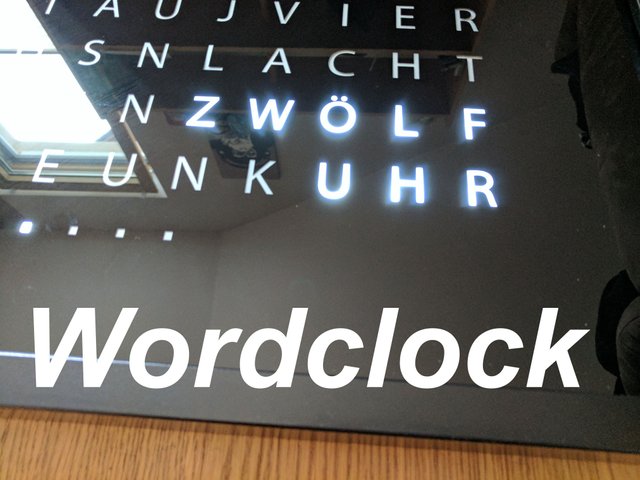
Are you bored of clocks that show you the time with numbers or on a round scale? Then you might be interested in seeing a Wordclock. A Wordclock presents you the time in the most simple way you could think of: natural language. In this post I will show you the Wordclock I built by myself and give you a quick overview of the things you need to also build one. Have fun!
How does a Wordlock look like and what can it do?
Let's first start with a few pictures of my Wordclock that give you a better impression of how it looks and how it might look in your room.
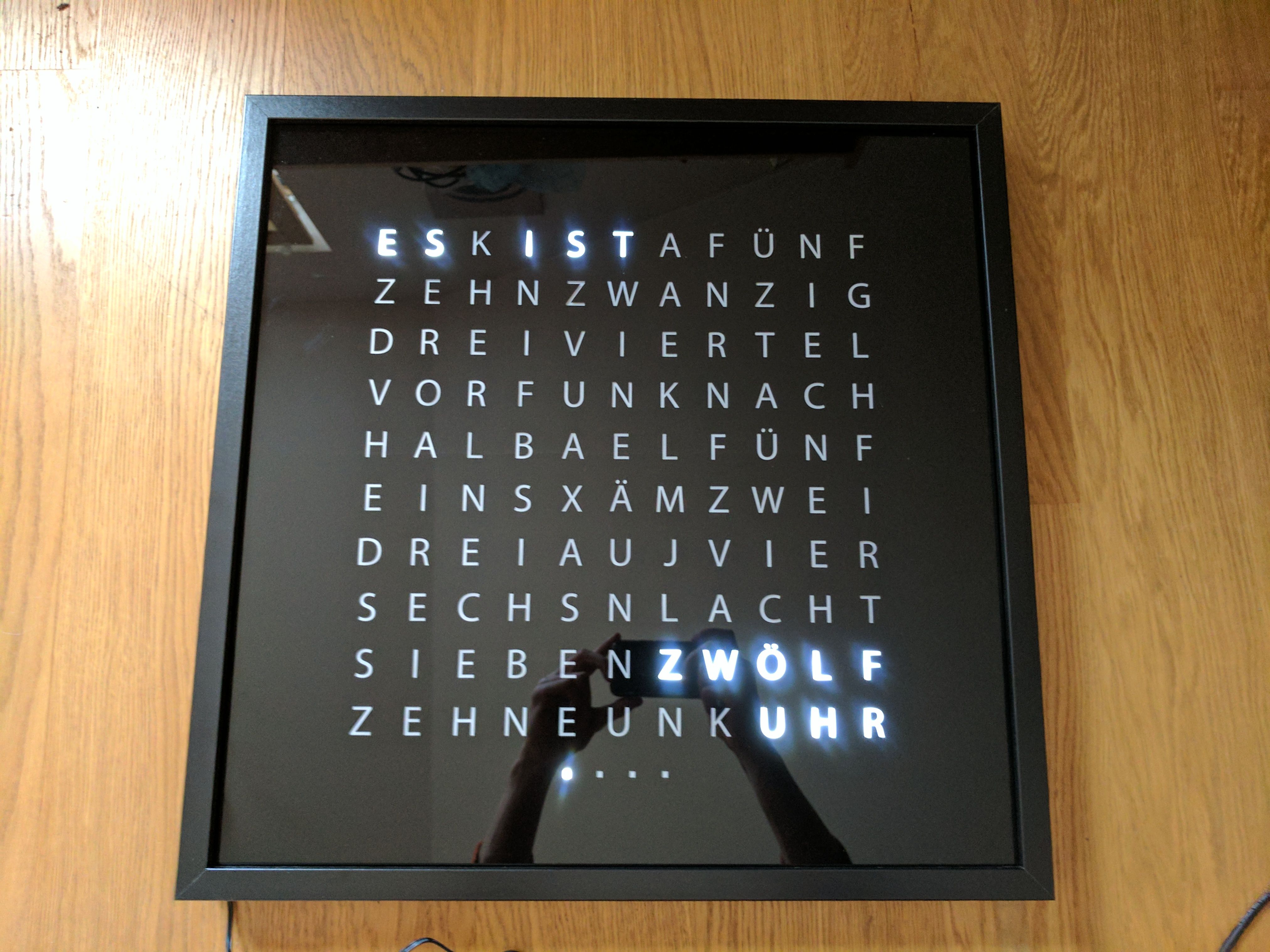
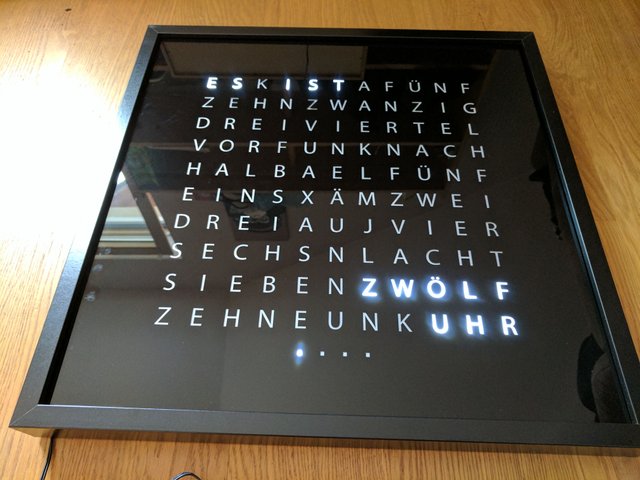
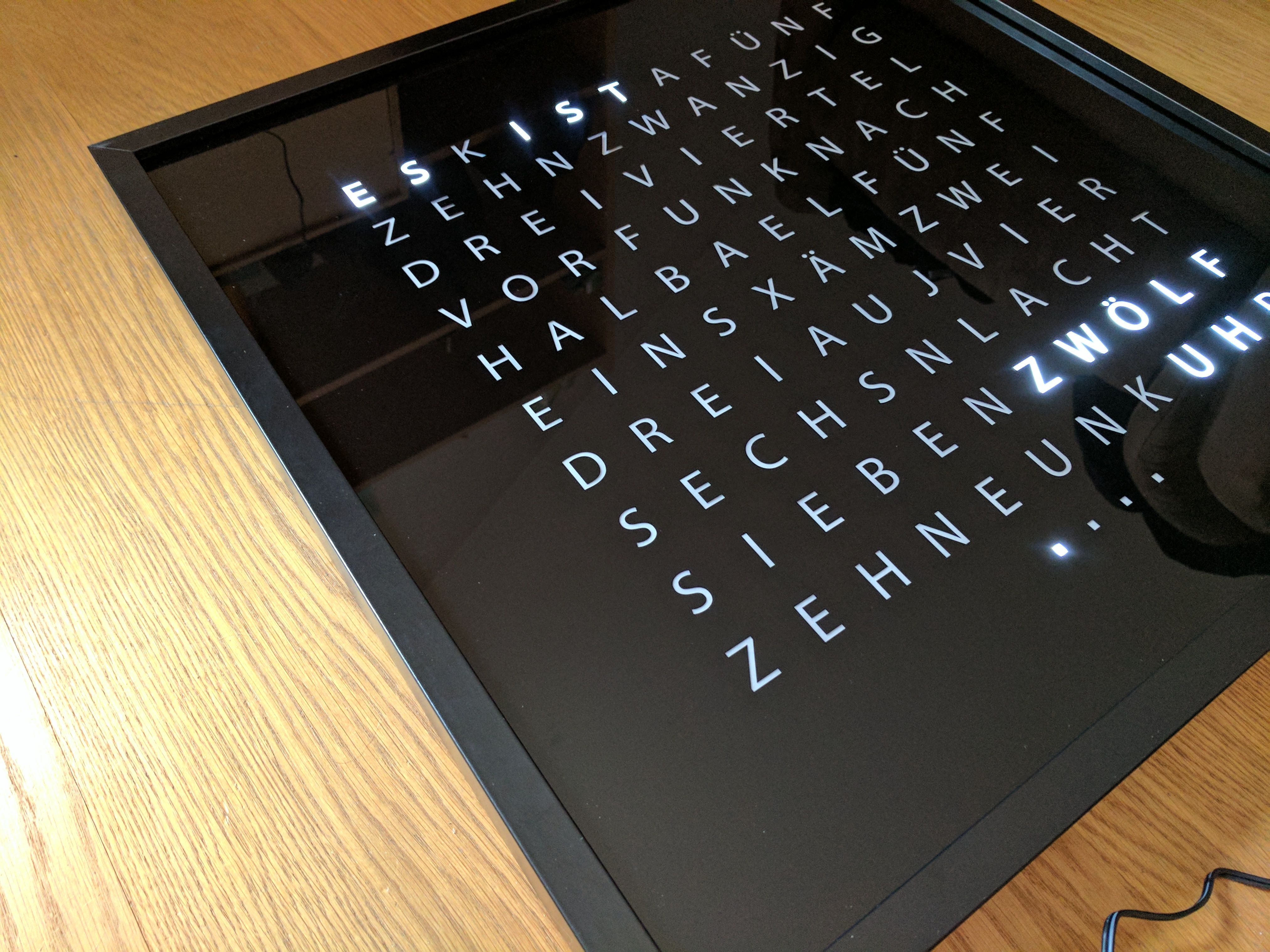
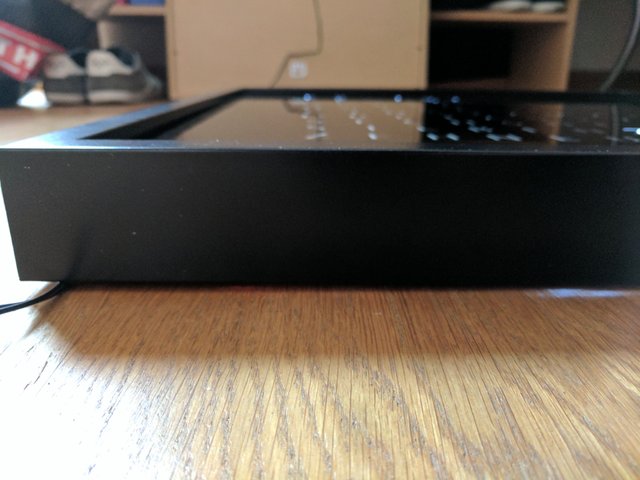
As you can see on the pictures, the clock shows the time in words. Since I'm from germany my clock is in german, but there are versions in every language you can think of. The actual time is shown with the lighted words and has to be read from top to bottom. It is very special that the words which might be lighted are hidden between letters that are just randomly placed in the grid. So at first sight, it's hard to find the words in the grid. The lighted time with words is only given with a precision of five minutes. If you want to have the time with a precision of one minute, you have to add the four dots in the bottom of the displayed words. The sentences always start with "It is" and then the time follows. Let's have a look at a few examples sentences:
- It is a quarter past four means 4:15 pm or am
- It is five o'clock means 5:00 pm or am
- It is ten past ten means 10:10 pm or am
As every other clock, a Wordlclock cannot only show the time. There has to be at least a functionality to set the current time. In addition, every feature that a normal clock has, can also be built into a wordclock, e.g. timers, alarms, etc. My Wordclock only has a button to set the current displayed time to 8:00. This isn't the optimal way to set the time but it is a very intuitive and easy-to-implement solution.
How much work is it to build a Wordclock and which skills are required?
The effort you have to expend in order to build your own Wordclock strongly depends on your knowledge in electronics. Even if you are following a guide step by step you will have to do things like wiring, soldering, testing and maybe even programming on your own. So you have to have at least basic skills in electronics. But to be honest, the relevant information can be acquired really fast regarding that there are many guides even for people with zero knowledge about all sorts of electronic circuits and related things in the internet.
So how moch work is it do build the clock? If you build up anything from scratch (like I did) I would say you need to expect about 20-30 hours. You can reduce this time a lot by using pre-build stuff. I will show you the parts you can get pre-build and all other materials in the next section.
What are the main steps to build a Wordclock and which materials do you need?
In this section I want to give you a brief overview of all the materials you need and what these are used for. I will not give you a complete guide how to build the clock because there already are many guides out there you can use (a few links in the conclusion). Let's first go through the materials that will cost you about 100 Euros:
- A big picture frame (mine is 45cm x 45cm) including a black film attached to it with the words cut out
- A grid that has all the LED's built-in in order to light the words
- Nearly 100 LED's and the additional dropping resistors that light the words
- A microcontroller that controls which words are light-up by analyzing the current time
- A Real-Time-Clock-Module that keeps track of the configured time for situations when the clock has no power connection
- An external power adapter that provides power to the Wordclock
- Wires, resistors, capacitors, transistors, buttons, shift registers, solder, a board and more to build the whole circuit
After this overview of the required materials, I will show you how these materials are used. The steps can normally be done in any order, so I will just describe every step alone.
Picture frame and word film
You have to buy a picture frame of the size you want and prepare it with a black film that has the words cut out. If you have a plotter or something you might be able to do it by yourself but usually it's the best idea to just ask your local copy shop to do this for you. It was around 30 Euros for me.
LED grid
The LED's that light the words from the back have to be put together in a grid, so that every letter (that has to be lighted) has its own LED. The grid has to seperate the different words in order to prevent LED's from lighting other words.
I used a grid made out of cardboard for my Wordclock, but there are tons of possibilities to build one. For example, you could use thin wood plates or 3D-printed material (I definitely want to try this in the future!).
The LED's are glued into that grid, so they can be wired from the back.
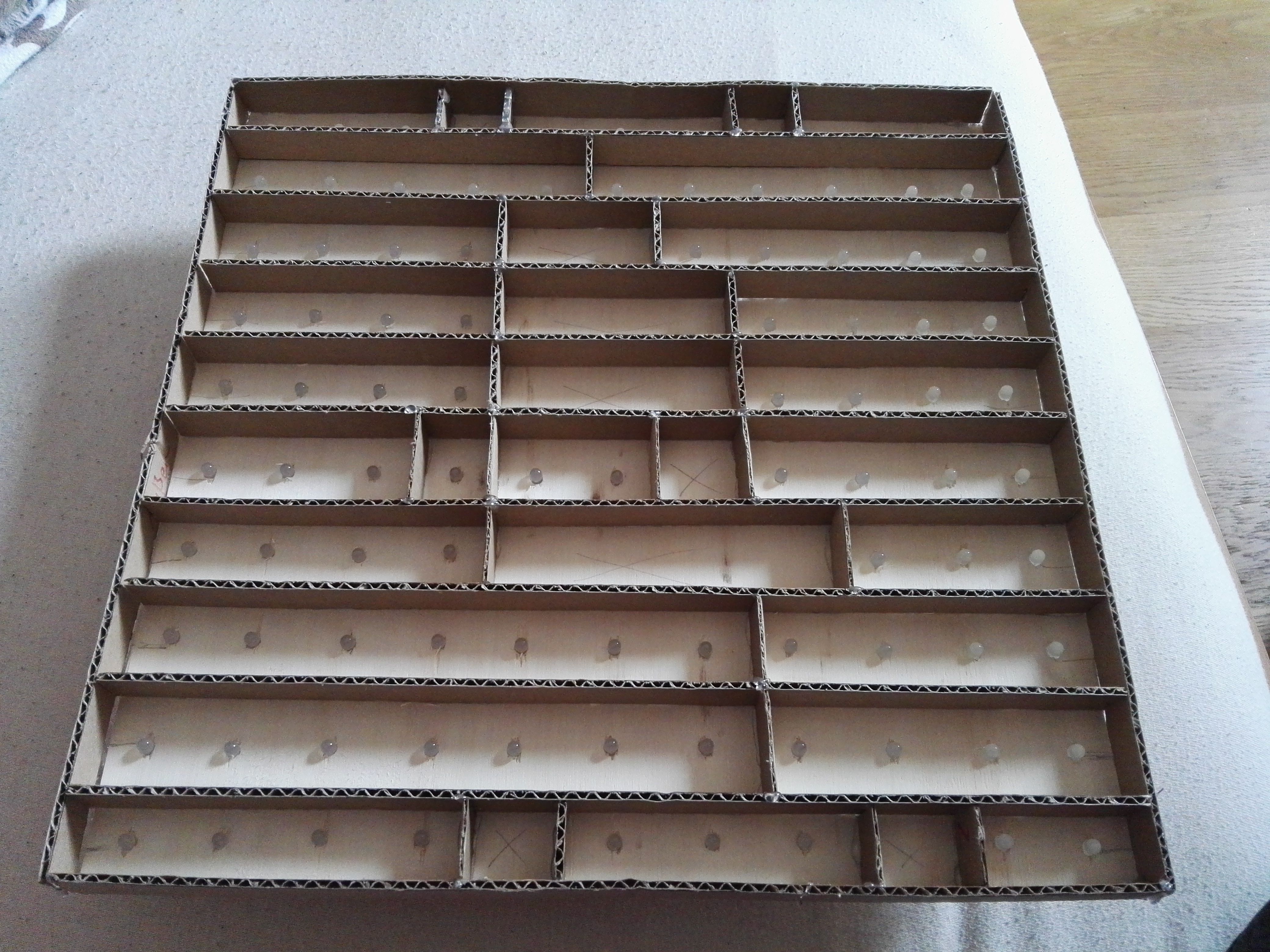
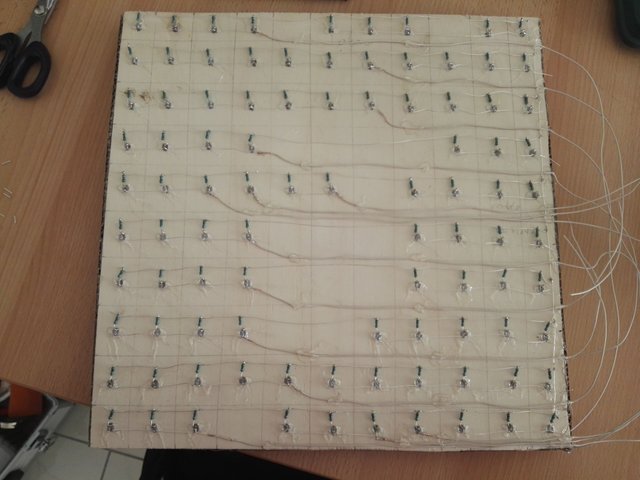
Main circuit board
The main circuit board is the brain of your Wordclock. It has components for everything: from power supply, over keeping track of the current time, to displaying the current time with the right words. There are many approaches to designing a suitable circuit for this application. Therefore, I will not describe the circuit itself in detail. I just want to give you a list of the "complex" components you definitely need:
- A microcontroller that controls all other components
- A Real-Time-Clock-Module that manages the current time
- Shift-Registers to light the LED's
And that's it. With these components you can build a working circuit board for your Wordclock. Now you might ask yourself: "Which software is used with the microcontroller?"
I used a software that I wrote myself. I did this because I wanted to learn how to program a microcontroller and because there was no software out there that was fitting for my application. But don't worry, there are plenty of tutorials that help you write a software or even provide you a software. However, in this case you might have to choose your components to fit a software.
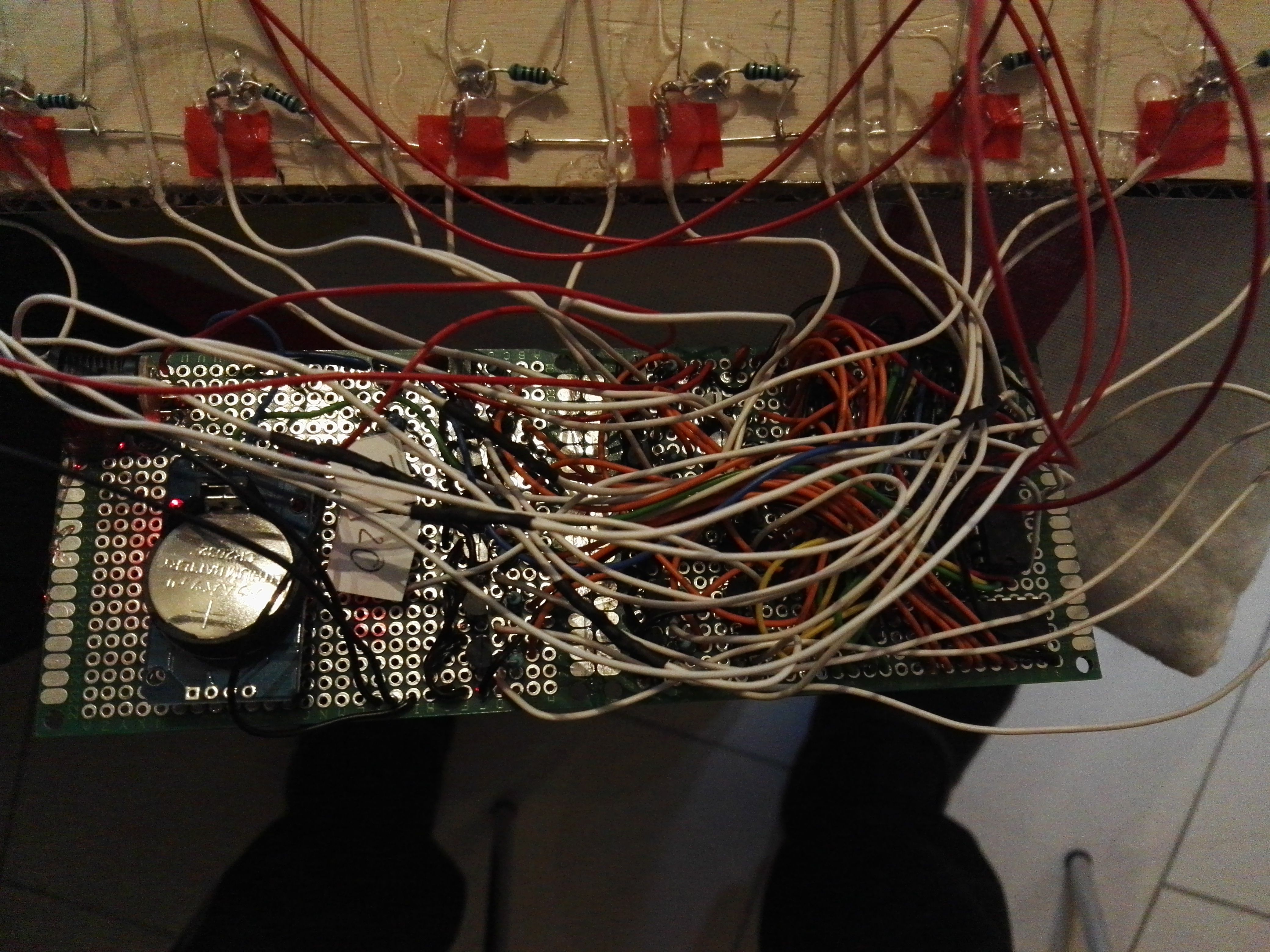
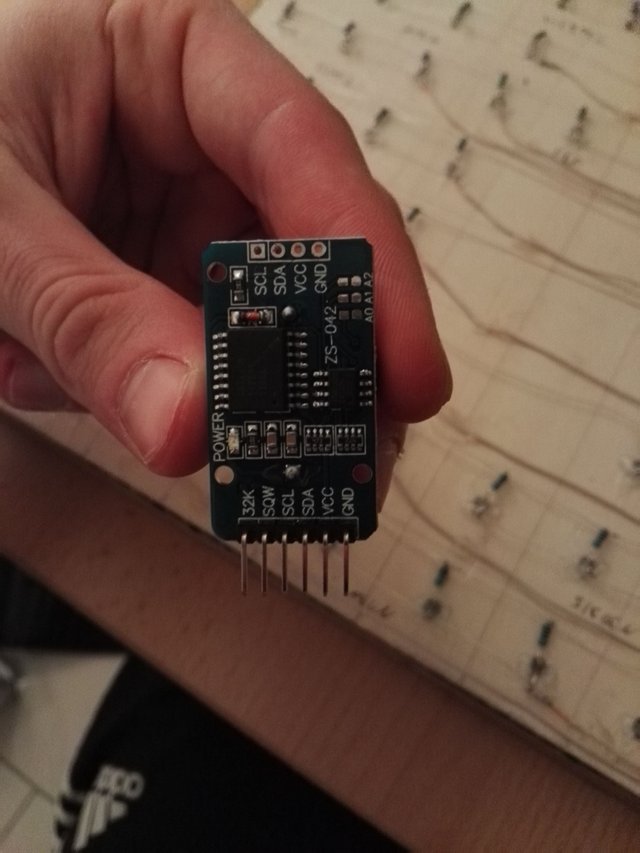
Wiring circuit board, power supply and LED's
The very last step (the only step you have to do in a certain order) is to wire the circuit board with the LED's and connect everything to a power supply. Then you are ready to go!
Conclusion
A Wordclock is a very nice feature for your home, as it can replace boring analog or digital clocks. I can really encourage you to try and build one for yourself. It is a very nice present for your beloved ones, too! Feel free to ask your questions in the comments. I will answer them and would like to read some feedback from you. Thank you very much for reading!
Tutorials
For those of you doesn't want to be thrown in at the deep end, there are some really nice tutorials out there. Don't worry too much about the language of the tutorials, since it is very easy to translate the pages with Google translator for example. Have a look at the following links:
- Tutorial for a high quality Wordclock with material plans, source code and a very detailled guide (german language)
- Overview of other tutorials or materials to use for building a Wordclock (german language)
- Simple tutorial with the use of an arduino and some nice additional features (german language)
- Very simple Tutorial with the use of an arduino (english language)
- Original, very expensive Wordclock to buy (german shop)
wow, that thing is made of cardboard, but it looks so shiney :P
Only the grid at the back is made of cardboard. I don't know if it's possible to build the whole clock only with cardboard :D
hi, @maxx2803
Thank you for writing good.
I will follow you and I hope to write better in the future.
Follow me ( @wonsama ), I'll providing korean realtime news every 1 hour.
If you do not know Korean, just use Google Translator.
Spent most of my life in NJYC metro. Global perspective is imperative. Anyway, I believe that. I know many do not. Glad you posted the Worldclock that reminds us of what we are a part of.
Congratulations @maxx2803! You have completed some achievement on Steemit and have been rewarded with new badge(s) :
Click on any badge to view your own Board of Honor on SteemitBoard.
For more information about SteemitBoard, click here
If you no longer want to receive notifications, reply to this comment with the word
STOP